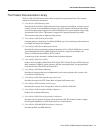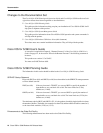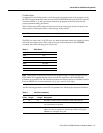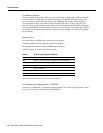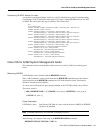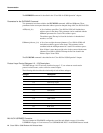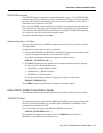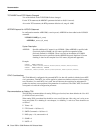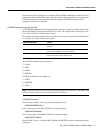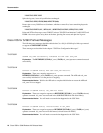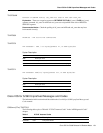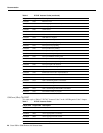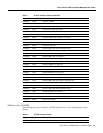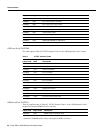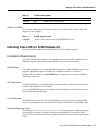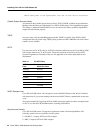
Cisco IOS for S/390 Release 2.0 Release Notes 17
Cisco IOS for S/390 Customization Guide
Note that Cisco IOS for S/390 does not configure TOS for SNMP or DNR queries, and NNTP is not
implemented. Telnet and the FTP control connection can be configured in the Service statement. The
FTP data connection can be configured in the FTP statement. The SMTP connection can be
configured on the Service statement.
LOGGING Keywords Logically Grouped
The LOGGING command has been changed slightly to introduce a logical grouping of the keywords
that control SYSOUT attributes and when the log is spun. The changes in this section apply to the
Cisco IOS for S/390 System Management Guide.
This change makes the command easier to use in that you do not need to specify all of the keywords
for an action, as is shown in the following table.
The SYSOUT attributes that are grouped are:
• CLASS
• DEST
• FORM
• WRITER
The SPIN attributes that are grouped are:
• LINES
• MINUTES
• SYNC
Note The NOW keyword is not associated with LINES, MINUTES, and SYNC. The PRINT and
WTO keywords are separate from each other, and from all the rest.
LOGGING Examples
Here are some examples of the usage of these grouped keywords.
LOGGING PRINT(ALL)
Prints all messages; leaves WTO, SYSOUT, and spin unchanged.
LOGGING WTO(ALL)
WTOs all messages; leaves PRINT, SYSOUT, and spin unchanged.
LOGGING CLASS(X)
Resets SYSOUT class to X; defaults DEST, FORM, and WRITER, and leaves remaining keywords
unchanged.
Keywords specified Action
All the keywords are specified. The LOGGING command will change all of the attributes as
specified.
Some of the keywords are specified. The specified attributes are changed, but the remaining attributes
of the grouped attributes are set to the default.
None of the keywords are specified. None of the attributes of the group will be changed, and any
previous attributes will be carried forward.



